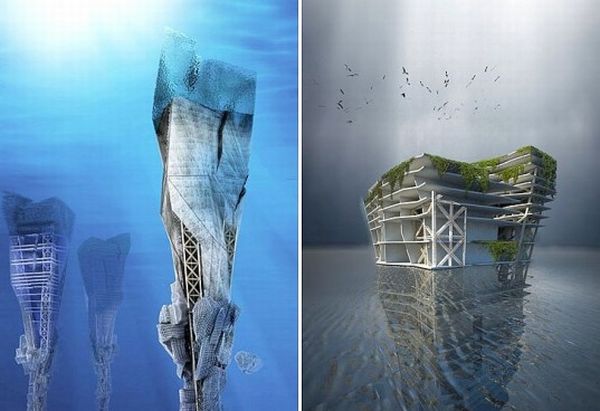
Skyscrapers, the very phrase pushes us into a wondrous glimpse of a âforestâ of glimmering glass-concrete towers, tall and mighty in their imposing forms. But with serious instigations of global warming, the warning bells of nigh ‘apocalypse’ are now beginning to sound at some corners that we are seriously running out of land space for our mega-cities, huge settlements and expansive conurbations. In this adverse scenario, mankind can always rely upon a structure with a much higher ratio of floor space per unit area, in comparison to horizontally laid out buildings. This is where underwater skyscrapers enter into the picture whose water oriented location, volumetric attributes and self-sustainability can aptly serve humanity in a post-apocalyptic situation.
So, without further ado, let us check out five intriguing yet credible underwater skyscraper concepts that will have the potentiality to feature adamantly ‘green’ attributes in the near future.
1. Underwater skyscraper to utilize waste from Great Pacific Garbage Patch
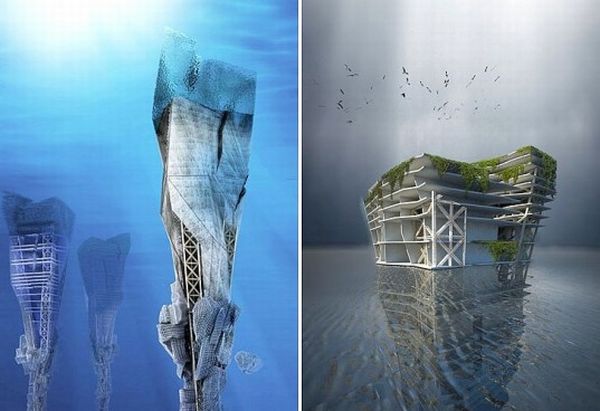
Three designers from Serbia, Milorad VidojeviÄ, Jelena PucareviÄ and Milica Pihler, have come across an adroit design concept of an underwater skyscraper that will recycle waste from Great Pacific Garbage Patch (a long stretch of marine litter) and convert it into usable energy. Christened as the Lady Landfill skyscrapers, the structures allude to an inverted form of the Eiffel Tower. Their lower most point will house the recycling facility where trash and landfill elements can be processed (like heating) to be converted to clean gaseous energy. The upper levels will comprise of residences and offices, thus forming a fully functional self-sustaining urban community.
2. Gyre
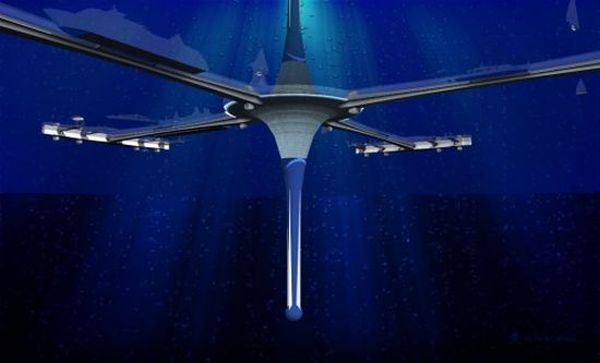
With a whopping 212,000 square meters of floor space, the Gyre by Zigloo will be a self-sustaining floating city conceived on a grand scale. To be powered by myriad of renewable sources like wind, solar and even tidal energy, the whole design will be a sort of green getaway for scientists as well as vacationers. The structure with a cross bearing (above water level) will have a spindle shaped double hulled glass tower that will be submerged 400m below sea level. The whole conception will be spatially zoned into definitive residential areas along with shops, restaurants, gardens and other recreational facilities. To finally accentuate upon its state of sustainability, the building will also incorporate systems for rain water harvesting and freshwater storage.
3. Water–Scraper underwater design
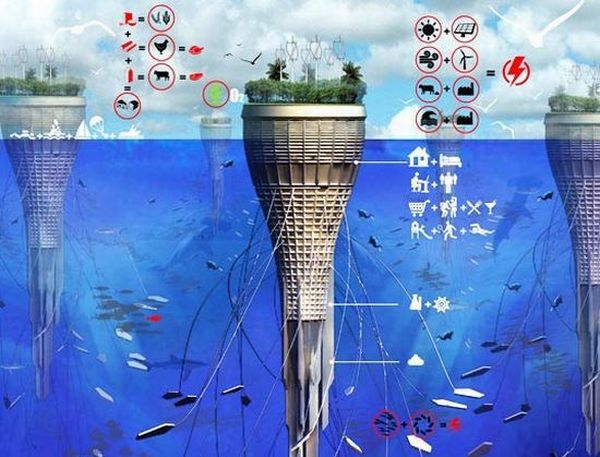
Conceptualized by Sarly Adre Bin Sarkum, this is another fascinatingly ambitious design that calls for a full fledged self-sustaining urban-scape in midst of the high seas. Dubbed as the ‘Water-Scraper’, the structure will be suspended along its longitudinal axis in the water. The upper ‘roof’ part above the sea level will contain lush green landscaping nourished by direct sunlight. The lower part (which forms the bulk of the design) will incorporate living and working quarters, along with harvesting facilities from renewable sources such as solar, wind and wave energy. Moreover, a system of ballasts attached to the conspicuous tentacles will help in generating kinetic energy as well as provide support for the main structure.
4. Underwater city by Higinio Llames and Ifigeneia Arvaniti
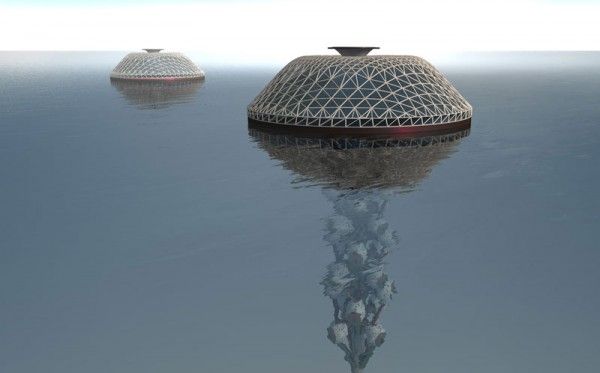
Looking like a giant super dome in the middle of the ocean, the super structure will give way to an elongated network of spore like elements that will be submerged below the sea level. These ‘spores’ will consist of independent spatial zones comprising of residences, offices, recreational facilities and even in-built farmlands. Coming back to the conspicuous dome, it will have a dual skin cladding that will help in harvesting tidal energy along with incorporating solar cells and wind turbines.
5. Taiwan skyscraper
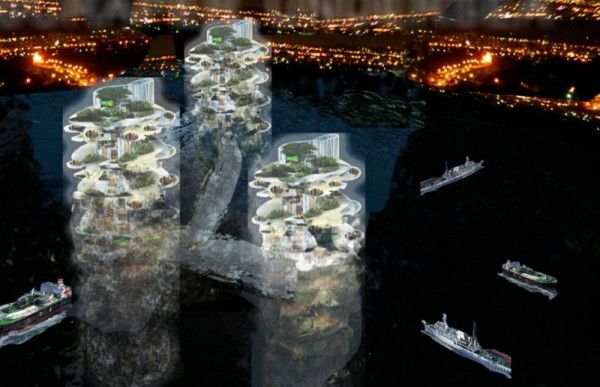
Envisaged for a Dystopian future (where water has covered 40 percent of the landmasses) in the year 2046, this self-sustaining project is to be built along the massive Asian continent near Taiwan. Comprising of separate zones like residences, office space and recreational areas, the whole structure will have accessibility as its main design feature. The spatial attributes will be intuitively distributed in allusion to user behavioral pattern. Moreover, to accentuate upon energy production and sustenance, the building will also incorporate a green eco-system along with intelligent environmental control systems.


